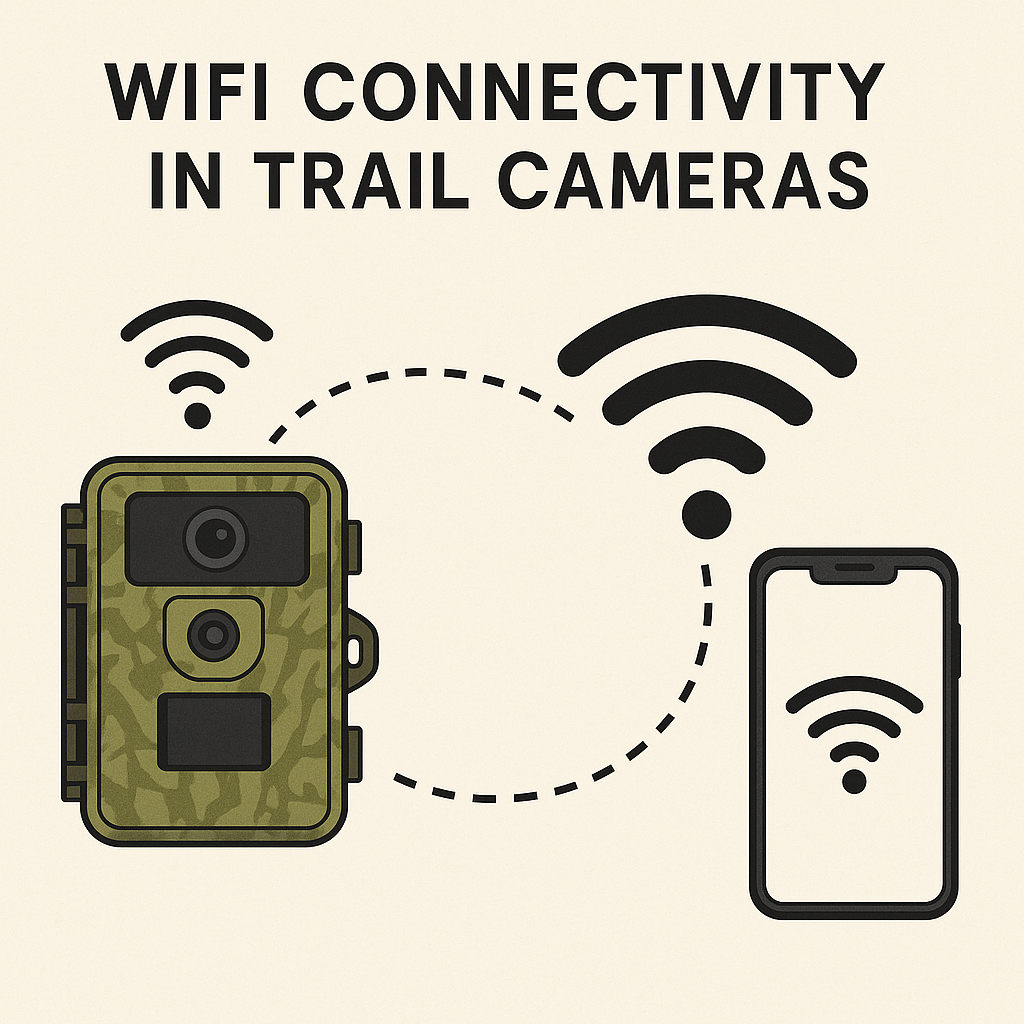Wi-Fi-Reichweite in Wildkameras
Erfahren Sie, was die Wi-Fi-Reichweite in Wildkameras bedeutet, wie sie funktioniert und warum sie für die Überwachung von Wildtieren, Sicherheit und Freizeitnutzung wichtig ist.
Glossar
A wireless technology enabling connectivity and data transfer between trail cameras and devices like smartphones or tablets.
Wi-Fi (short for Wireless Fidelity) is a technology that allows devices to communicate wirelessly using radio waves, based on IEEE802.11 standards. It enables data transfer between devices such as smartphones, computers, cameras, and other Wi-Fi-enabled equipment.
In trail cameras, Wi-Fi enables functionalities such as remote control, live monitoring, file transfers, and firmware updates. This wireless connectivity helps users access and manage trail cameras efficiently without the need for physical interaction.
Wi-Fi integration in trail cameras enhances their usability and functionality. Below are the key applications of Wi-Fi in these devices:
###1. Remote Configuration and Control Wi-Fi enables users to connect their trail cameras to smartphones or tablets via dedicated apps. This allows:
Example Use Case: A wildlife photographer can remotely adjust the camera to focus on a specific trail without disturbing the surroundings.
###2. File Transfer Wi-Fi facilitates wireless transfer of images and videos from the trail camera to a smartphone, tablet, or computer, eliminating the need for manual retrieval.
Benefits:
Example: A nature enthusiast can download and share footage of a rare bird sighting directly from their smartphone.
###3. Live Monitoring Some trail cameras with Wi-Fi support real-time feed monitoring. This feature is ideal for:
Use Cases:
###4. Firmware Updates Wi-Fi-enabled trail cameras can receive firmware updates wirelessly. These updates improve functionality, fix bugs, and add new features.
Example: A firmware update may enhance night vision or extend battery life, which can be installed through the app.
Wi-Fi-enabled trail cameras support various standards, including:
Wi-Fi trail cameras use encryption protocols like WPA2 or WPA3 to secure connections and prevent unauthorized access.
Researchers studying nocturnal animals can use Wi-Fi trail cameras to:
Homeowners can use Wi-Fi trail cameras for:
Hunters can use Wi-Fi trail cameras to:
###1. Can I use a Wi-Fi-enabled trail camera without internet? Yes. Wi-Fi creates a direct connection between the camera and your device. Internet access is only needed for cloud uploads or sharing files online.
###2. How far does a trail camera’s Wi-Fi reach? Typically up to200 meters in open areas, but obstacles like trees or walls may reduce the range.
###3. Are all trail cameras Wi-Fi-enabled? No, Wi-Fi is a feature in mid-to-high-end models. Basic models rely on SD cards or USB for file transfer.
Wi-Fi is a transformative feature for trail cameras, enabling remote configuration, real-time monitoring, and seamless file transfers. Whether for wildlife research, home security, or hunting preparation, Wi-Fi-enabled trail cameras offer unmatched versatility and convenience. However, users should consider factors like battery consumption and range limitations to make the most of this technology.
Discover our collection of trail cameras equipped with advanced Wi-Fi capabilities for seamless remote control and file transfer.
Wi-Fi in trail cameras is a feature that allows wireless connection between the camera and devices like smartphones or tablets for remote control, file transfer, and live monitoring.
Yes, most Wi-Fi-enabled trail cameras create a direct connection with your device, so internet access is not required for basic functions like file transfer and live view.
Wi-Fi enables remote configuration, live monitoring, quick file transfers, and firmware updates, making trail cameras more versatile, user-friendly, and convenient.
Yes, Wi-Fi usage can drain the camera's battery faster, especially during live monitoring or large file transfers. Using external power sources can help mitigate this.
Wi-Fi range in trail cameras depends on the standard and environmental factors, typically extending up to200 meters in open areas but shorter in obstructed locations.
Erfahren Sie, was die Wi-Fi-Reichweite in Wildkameras bedeutet, wie sie funktioniert und warum sie für die Überwachung von Wildtieren, Sicherheit und Freizeitnutzung wichtig ist.

Erfahren Sie, warum WiFi-Konnektivität eine wertvolle Funktion für moderne Wildkameras ist. Entdecken Sie, wann diese Funktion am nützlichsten ist und welche Faktoren am wichtigsten sind.
Erfahren Sie, was eine Fernbedienung für Wildkameras ist, ihre Hauptfunktionen, Arten der Konnektivität und wie sie die Beobachtung von Wildtieren, Fotografie und Sicherheit verbessert.